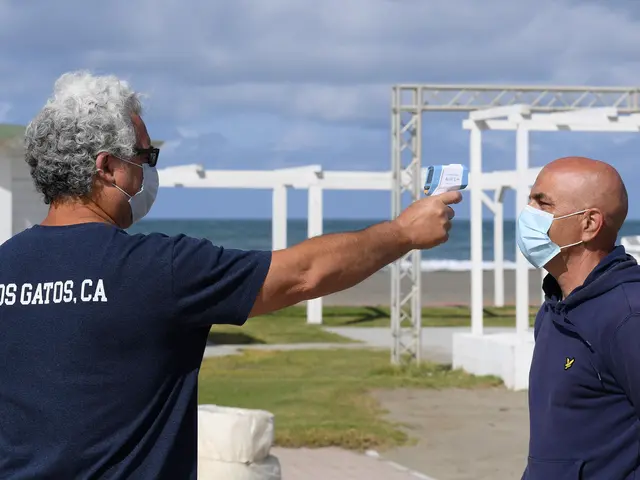Italy's coronavirus infection rate has gradually climbed over the last four weeks with the national reproduction rate climbing near an important threshold, government figures have shown.
Government and health officials urged caution but said the situation remains under control.
According to the data released on Friday by the National Institute of Health, best known as the ISS, the national coronavirus reproduction rate in Italy has risen to 0.98 -- just below the 1.0 threshold. The number refers to the average number of other people infected by each infected individual.
But eight Italian regions -- including Lazio, the region that includes the Italian capital of Rome; Campania, which includes Naples, the country's third-largest city; the southern island region of Sicily; and Emilia-Romagna, which includes the city of Bologna -- all have reproduction rates above 1.0.
Still below 1.0 is Lombardy, by far Italy's hardest-hit region which includes the country's financial capital of Milan.
"The transmission of the coronavirus in Italy persists, which means that when there are certain conditions there can be significant outbreaks," the ISS said in a statement.
Though the reproduction rate is rising, total infections remain remarkably low. On Monday, the country of more than 60 million residents recorded 159 new infections and 12 deaths from COVID-19, the disease caused by the coronavirus.
Monday's number of new infections is the lowest Since July 21, a period that saw three days with more than 300 infections. Still, the daily figures remain far below the totals from March 18 and April 12, when there were at least 4,000 infections 22 times in the 25-day period.
Similarly, Monday's death total was the highest since July 25 but dramatically below the worst period of the outbreak, which included a peak one-day death total of 969 on March 27.
According to figures from the Ministry of Health, the outbreak has now claimed 35,166 lives in Italy, with infections totaling 248,229. In the last 24 hours, 129 patients were listed as recovered from the pandemic, bringing that total to 200,589.
According to Massimo Galli, director of the Institute for Biomedical Science at the Sacco Hospital in Milan, the latest increase in infections is due to a mix of domestic transmission and the arrival of infected people from abroad.
But Galli, in an interview with the Rome newspaper Il Messaggero, said Italy should not consider closing its borders, which it started to open to foreign arrivals starting June 2.
"Closing the borders would imply a very serious problem and would seriously damage an already weakened economy," Galli said in the interview. "We are far from that point. We will have to deal with a small number of imported cases."
Galli's remarks coincide with efforts from the Italian government to attract tourists from countries where the outbreak is deemed to be under control. Those efforts include modest ad campaigns, and, according to media reports, a handbook published especially for tourists showing the coronavirus rules in each of Italy's 20 regions.
 简体中文
简体中文





